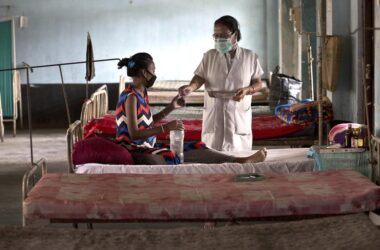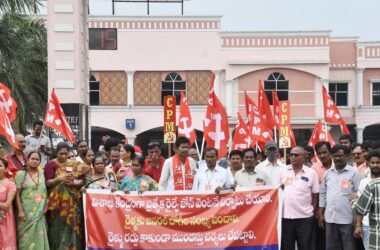Ladies work at a MGNREGS website in Hubballi, Karnataka. File
| Photograph Credit score: The Hindu
Arguably, the controversy round traits in Indian girls’s employment is barely outclassed by an analogous one relating to traits in poverty. Sadly, the scrutiny of the measurement of poverty is just not matched by equally shut consideration to the measurement of employment.
The broad contours of the controversy, primarily counting on knowledge from the Nationwide Pattern Surveys (NSS) and Periodic Labour Drive Surveys (PLFS), are the next: the work participation price for girls ages 15 and above fluctuated round 42% between 1993-94 and 2004-05, declined to twenty-eight% in 2011-12, and plummeted to 22% in 2017-18. From 2017, it miraculously surged, and reached 36% in 2022-23.
Two contrasting narratives
In an period of heightened politicisation of statistics, these observations grew to become a ping-pong between pessimists and optimists. The pessimistic story defined the decline in girls’s work participation as an indication of declining job availability and later enhance as an indication of poverty. The optimistic story painted the preliminary decline as an indication of rising prosperity, permitting girls to concentrate on their households, and the surge as an indication of accelerating job alternatives. Others have tried to see this as a pure transformation of the financial system chronicled by Claudia Goldin’s well-known U-shaped curve the place girls are displaced from the labour market because the agricultural workforce strikes to industrial employment, with feminine employment rebounding with the service financial system once more making house for them.
Remark | The measure of the working lady
We should look at the muse of those narratives. We see a putting pattern after we break down the 25-59-year-old girls’s work participation into three classes: self-employment in agriculture, self-employment in different actions, primarily in petty manufacturing or shopkeeping, and wage and salaried work in handbook or white-collar work.
Ladies’s work on household farms dropped from 23% to 10% between 1993 and 2017. Throughout the period of accelerating employment, the work on household farms bounced again to 23%, thus greater than doubling within the final 5 years. Wage labour and self-employment in non-farm work remained kind of regular at 14-16% and 5-6%, respectively, though we see a slight upward pattern in wage employment in recent times. So, a lot of the adjustments are pushed by the ebbing and flowing tide of ladies’s work on household farms.
Earlier than we begin spinning tales to elucidate these traits, allow us to discover the challenges confronted by our labour power surveys, which attempt to pigeon-hole girls who increase each chickens and youngsters. NSS and PLFS surveys ask interviewers to fill out a grid containing temporary descriptions corresponding to “regular principal exercise” and “whether or not engaged in any work in a subsidiary capability.”
However questions on principal and subsidiary exercise standing are alien for rural girls whose day is stuffed with calls for for bathing and feeding youngsters, fetching water, washing cattle, harvesting grains, and making pickles on the market. The interviewer’s job is to offer context and ask questions that elicit details about the important thing indicators of curiosity. For instance, a research by the Nationwide Council of Utilized Financial Analysis traced the influence of question-wording on girls’s work participation price. Ladies’s work participation was initially measured utilizing NSS-style questions and later via probing questions. This elevated the agricultural girls’s work participation price from 28% to 44% for a similar girls. Many of the omissions have been of ladies who have been self-employed in agriculture and animal care.
Traditionally, these challenges have been addressed by counting on educated and skilled discipline investigators who discovered to interpret their questions, holding native circumstances in thoughts. Nevertheless, India’s once-vaunted statistical system has been in disaster. As Pramit Bhattacharya famous, till the late Nineties, interviewers have been common workers recruited domestically. Since then, supervisors have been centrally recruited and sometimes posted in areas they will not be aware of, and interviewers are short-term contractual employees employed domestically. This has led to a steep decline in high quality, culminating within the authorities disputing the standard of the NSS consumption expenditure survey in 2017-18. A recognition of the declining high quality of NSS surveys could have led to growing consideration to knowledge high quality, as evidenced by the rise within the power of subordinate statistical companies from 2,181 officers in 2009-10 to three,121 in 2019-20. This implies that elevated consideration to capturing girls’s work on household farms moderately than an precise enhance in farm work accounts for the doubling of ladies farmers over a brief interval of 5 years.
Remark | Ladies, marriage and labour market participation
The counterargument
A counterargument is likely to be that this enhance is because of financial shifts, notably males’s motion out of agriculture, creating house for girls. But, a modest decline in male self-employment in farming, from 33% to 25%, occurred between 2004-05 and 2017-18, when the feminine work participation price additionally declined. Since then, the proportion of males categorised as farmers/household helpers has elevated barely, accompanied by a way more important enhance for girls.
As a substitute of debating the reason for the autumn and the rise within the proportion of ladies farmers and household helpers, consideration must concentrate on the relative stagnation within the proportion of ladies who’re wage employees (round 16%) and homeowners/household helpers of small companies (round 6%) and search to increase girls’s alternatives exterior of agriculture, which is mostly higher paying.
Sonalde Desai is Professor on the Nationwide Council of Utilized Financial Analysis (NCAER); Pallavi Choudhuri is Senior Fellow at NCAER. Views are private







